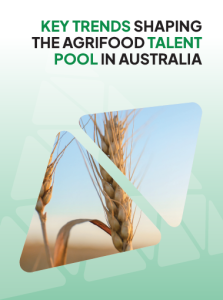Agricultural Engineering To Play Crucial Role In The Digital Revolution Underway In Australian Agriculture.
By Dr. Ray Johnson, Managing Director, Agricultural Appointments. Agricultural engineers have a bigger role to play now that traditional farming methods are being integrated with technology. There is little doubt that we are at an epoch where agricultural science and engineering are coming together like never before to drive the digital revolution in Australian agriculture….
By Dr. Ray Johnson, Managing Director, Agricultural Appointments.
Agricultural engineers have a bigger role to play now that traditional farming methods are being integrated with technology. There is little doubt that we are at an epoch where agricultural science and engineering are coming together like never before to drive the digital revolution in Australian agriculture. Agricultural engineers play a crucial role in shaping the whole farming process to focus on driving productivity and profitability, while at the same time improving safety and sustainability.
Engineers who at one stage may only have been thinking about careers in aeronautics, infrastructure or mining may now also enjoy the satisfaction of contributing to feeding the world-a truly worthwhile career. Today, agricultural engineering reaches far into every activity of agriculture and modernises farming so that quality food can be produced sufficiently and continuously.
A recent report (MetaScan 3: Emerging Technologies by Policy Horizons Canada) found three key technology areas in agriculture where engineering is driving major change in agriculture, namely Sensors, Automation and Structural Designing.
- Sensors help agriculture by enabling real-time traceability and diagnosis of crop, livestock and farm machine states.
- Air & soil sensors: Fundamental additions to the automated farm, these sensors would enable a real time understanding of current farm, forest or body of water conditions.
- Equipment telematics: Allows mechanical devices such as tractors to warn mechanics that a failure is likely to occur soon. Intra-tractor communication can be used as a rudimentary “farm swarm” platform.
- Livestock biometrics: Collars with GPS, RFID and biometrics can automatically identify and relay vital information about the livestock in real time, including digital fencing.
- Crop sensors: Instead of prescribing field fertilization before application, high-resolution crop sensors inform application equipment of correct amounts needed. Optical sensors or drones are able to identify crop health across the field (for example, by using infra-red light).
- Automation will help agriculture via large-scale robotic and microrobots to check and maintain crops at the plant level.
- Variable rate swath control: Building on existing geolocation technologies, future swath control could save on seed, minerals, fertiliser and herbicides by reducing overlapping inputs. By pre-computing the shape of the field where the inputs are to be used, and by understanding the relative productivity of different areas of the field, tractors or agbots can procedurally apply inputs at variable rates throughout the field.
- Rapid iteration selective breeding: The next generation of selective breeding where the end-result is analysed quantitatively and improvements are suggested algorithmically.
- Agricultural robots: Also known as agbots, these are used to automate agricultural processes, such as harvesting, fruit picking, ploughing, soil maintenance, weeding, planting, irrigation, etc.
- Precision agriculture: Farming management based on observing (and responding to) intra-field variations. With satellite imagery and advanced sensors, farmers can optimise returns on inputs while preserving resources at ever larger scales. Further understanding of crop variability, geolocated weather data and precise sensors should allow improved automated decision-making and complementary planting techniques.
- Robotic farm swarms: The hypothetical combination of dozens or hundreds of agricultural robots with thousands of microscopic sensors, which together would monitor, predict, cultivate and extract crops from the land with practically no human intervention. Small-scale implementations are already on the horizon.
- Structural designing involves technologies that extend the reach of agriculture to new means, new places and new areas of the economy.
- Closed ecological systems: Ecosystems that do not rely on matter exchange outside the system. Such closed ecosystems would theoretically transform waste products into oxygen, food and water in order to support life-forms inhabiting the system. Such systems already exist in small scales, but existing technological limitations prevent them from scaling.
- Vertical farming: A natural extension of urban agriculture, vertical farms would cultivate plant or animal life within dedicated or mixed-use skyscrapers in urban settings. Using techniques similar to glass houses, vertical farms could augment natural light using energy-efficient lighting. The advantages are numerous, including year-round crop production, protection from weather, support urban food autonomy and reduced transport costs.
In my next article, I will look at whether Millennials are ready for a career in agriculture…
The Latest Updates
Let’s look at the current trends in job demand and talent availability in the agriculture and agribusiness sector in Australia over the second half of 2023 and the first quarter of 2024. There was a weakening of job demand in this sector but a slight improvement in candidate availability and job interest during this period….
In times past, people’s working lives often played out over many years at one company, but now the world has vastly changed. These days it is common to shift between jobs and organisations, but this practice raises questions as to what is today considered the Goldilocks time to spend in a job? How often do…
Employee retention matters. Organisational issues such as training time and investment, lost knowledge, mourning, insecure co-workers and a costly candidate search aside; failing to retain a key employee is costly. Various estimates suggest that losing a middle manager costs an organisation up to 100 percent of their salary. The loss of a senior executive is…











